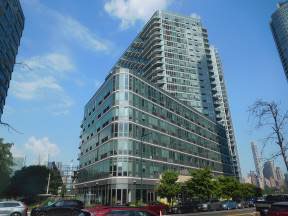
NEW YORK CITY—Thanks to robust business activity in 2017, the workforce in Lower Manhattan reached the highest level in 16 years at year's-end 2017.
Last year, Lower Manhattan also registered the highest level of commercial leasing activity since 2014, according to a report released by the Alliance for Downtown New York.
“We finally have the same number of people working in the area as we did on 9/11,” says Downtown Alliance president Jessica Lappin. “This is a big milestone for Lower Manhattan and has happened because tech, media and creative companies have grown here, even as the number of jobs from more traditional financial services firms has declined.”
Private sector employment grew across many industries in Lower Manhattan with more than 44,000 new jobs added since the recession. The robust hiring activity raised the 2017 workforce total to 242,000 positions. Last year, Lower Manhattan gained a net 8,367 private sector jobs.
The growth was driven largely by professional services (+4,218 jobs), as well as healthcare (+3,207 jobs) and hotel and food services (+3,027 jobs). Healthcare has been the fastest growing employment sector in Lower Manhattan since 2009, growing by 114%, according to the Alliance. While healthcare occupies just 1% of leased office space in the district, the past several years have seen an increasing number of healthcare tenants relocating to office buildings in Lower Manhattan.
The FIRE sector lost 811 jobs last year, while administrative and support services companies trimmed its workforce by 2,453 positions.
Commercial office leasing rose 63% year-over-year with 5.5 million square feet of new leasing activity in 2017. Approximately 60% of the new leasing activity was led by the technology, advertising, media and information and government sectors. Relocation lease deals by Spotify to 378,000 square feet at 4 World Trade Center and Macmillan Publishers to 261,000 square feet at 120 Broadway were some of the largest deals of the year and will make technology and media firms among the largest office occupiers in the neighborhood.
The Alliance's report significantly points to the restaurant and hotel sectors as key drivers for the Lower Manhattan economy that is transforming the district into a destination once again.
“Lower Manhattan's days as a culinary and retail backwater are in the rear-view mirror,” the Alliance for Downtown New York states in its year-in-review report for 2017. More than 60 food and dining establishments opened in Lower Manhattan in 2017, including Nobu, which debuted in April 2017 after moving from Tribeca.
Lower Manhattan's hotel market showed strength and diversification across price points. Occupancy rates were up year-over-year and from the end of 2015 even as the market absorbed over 1,700 new rooms since the beginning of 2016. With strong occupancy rates, the outlook for Lower Manhattan's hotel market remains positive, according to the Alliance. The hotel occupancy rate in the fourth quarter in Lower Manhattan was 89%, slightly lower than the citywide rate of 91%.
The average daily room rate for hotels in Lower Manhattan was $294 in 2017, up 4% year-over-year.
By the end of 2018, Lower Manhattan's hotel market is expected to grow to more than 8,200 rooms, an increase of 100% from five years ago, the Alliance notes in the report.
Want to continue reading?
Become a Free ALM Digital Reader.
Once you are an ALM Digital Member, you’ll receive:
- Breaking commercial real estate news and analysis, on-site and via our newsletters and custom alerts
- Educational webcasts, white papers, and ebooks from industry thought leaders
- Critical coverage of the property casualty insurance and financial advisory markets on our other ALM sites, PropertyCasualty360 and ThinkAdvisor
Already have an account? Sign In Now
*May exclude premium content© 2024 ALM Global, LLC, All Rights Reserved. Request academic re-use from www.copyright.com. All other uses, submit a request to [email protected]. For more information visit Asset & Logo Licensing.








